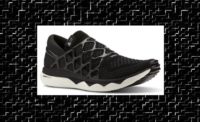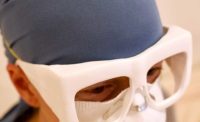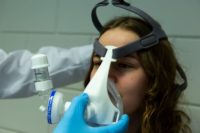Lifelike 3D-Printed Spine Helps Train Spinal Surgeons

NOTTINGHAM, England—A team of Nottingham Trent University researchers are 3D printing replica human vertebrae which can act and feel like real bone tissue to help train spinal surgeons before they go into live operations, reports Medicaldevice-developments.com. The project is in collaboration with consultant spinal surgeon Professor Bronek Boszczyk, of Nottingham University Hospitals Trust, who is a visiting professor at Nottingham Trent University.
The models, which are created using powder printing technology to help achieve a lifelike porosity of real bone, feature hard outer layers and a softer center. They are aimed at surgeons looking to perform procedures such as laminectomies, to relieve trapped nerves, which can involve the removal of bone tissue. Individual models can also be created from CT scan data to provide accurate representations of people with complex conditions such as scoliosis.
“Consultants undertaking delicate and precise procedures like spinal surgery need as much knowledge and experience as possible as part of their surgical training before going into live operations,” says Professor Philip Breedon, of the university’s Design for Health and Wellbeing Group.
“One error can lead to catastrophic, life-changing consequences for a patient, so it’s imperative that surgeons can prepare themselves thoroughly.
“This research will enable clinicians to experience how performing spinal surgery feels both physically and mentally, but in a safe training environment.”
The models are made from poly lactic acid and a binding agent and are coated in polyester. The softer inside is made from polyurethane. Discs between vertebrae are made from silicone.
The next stage of the research is to print replica bones that vary in strength to give surgeons an accurate experience of operating on people with conditions like osteoporosis. It is hoped that the technology will also start to be used in the classroom within the next few years.
The technology was designed by postgraduate student Joseph Meeks, who worked on the technology as part of his MSc in Medical Product Design. “Until a surgeon goes into a live operation, he or she has very little knowledge of how it feels to perform spinal surgery,” Meeks said of his design. “This research provides consultants with a realistic representation of spinal surgery, [and] allows them to learn in a safe and calm environment. By better communicating these experiences, we can improve the skills of surgeons in the classroom and help enhance operative outcomes for patients in real life.”
Looking for a reprint of this article?
From high-res PDFs to custom plaques, order your copy today!





